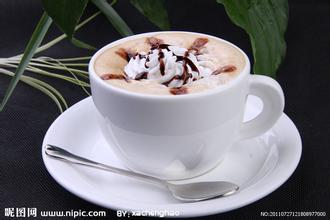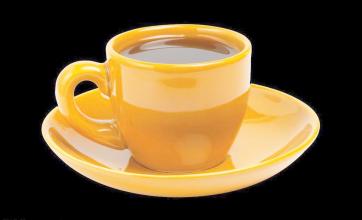Introduction to the characteristics of Coffee Flavor Manor in Shaqiso producing area of Ethiopia
Ethiopia is located at 6 ~ 9 degrees north latitude and 34 ~ 40 degrees east longitude. It is located in the center of the Horn of Africa and is a landlocked country. It is bordered by Djibouti and Somalia to the east, Sudan to the northwest, Eritrea to the north and Kenya to the south. [5]
Topography
There are mainly mountain plateaus in Ethiopia, and the central and western regions are the main part of the plateau, accounting for 2% of the total. The East African Rift Valley runs through the whole territory, with an average elevation of nearly 3000 meters, which is known as the "roof of Africa". The terrain around the plateau is gradually declining. The Darol depression in the north fell to 113 meters below sea level, the lowest point in the country. The coast of the Red Sea is a narrow banded plain. Deserts and semi-deserts in the north, south and north-east account for about 25% of the country's area. The Dashan peak of the Ximen Mountains is 4623 meters above sea level, which is the highest peak in Ethiopia. [6]
Climate
Due to the large difference between latitude span and altitude, Ethiopia is located in the tropics, but the temperature is uneven in different places. The heavy rainy season is from June to September, the dry season is from October to January, and the light rainy season is from February to May. Due to uneven rainfall in different seasons and regions, local drought is easy to occur. The temperature ranges from 9.7 ℃ to 25.5 ℃. The average annual temperature is 16 ℃. [5]
Hydrology
There are many rivers and lakes in the territory, where the Blue Nile originates, but the utilization rate is less than 5%. [1]
Natural resources editor
Proven deposits include gold, platinum, nickel, copper, iron, coal, tantalum, silicon, potash, phosphate, marble, limestone, oil and natural gas. Companies from Malaysia, Saudi Arabia, Britain, Sudan, Jordan and other countries have carried out oil and gas exploration and development in Ethiopia. Rich in water resources, known as the "East African Water Tower"
The coffee (which is called "Buna" in the local official Amharic language) is made, and before tasting the coffee, there is a snack. The hostess brings a plate of refreshments (usually bread or cake) and a dessert knife to the guests, who cut the refreshments, which is a bit like slicing a birthday cake. This may be what we call coffee companions today.
When the guests all picked up the refreshments, the highlight of the coffee ceremony began. The hostess poured the rich coffee liquid from the coffee pot into a small ceramic or magnetic coffee cup like us drinking Kungfu Tea on the small table, and gave it to the guests one by one on a tray, with a small clay jar containing granulated sugar. Guests can take it as they like.
Local people like to add a lot of sugar to their coffee, perhaps because their coffee is particularly rich and bitter.
The first coffee is called "Abu" in Amharic, and it has a strong flavor. Although there is only a small cup, it makes people excited after drinking it, and it feels completely different from the instant coffee drunk in China. In contrast, instant coffee is lighter, like a cup of tea, while "Abramovich" is thicker, that is, a cup of wine. This is a drink that keeps the aroma of coffee in the mouth for a long time.
After the first course, the hostess added some more water to the pot and continued to boil. Soon the second course of coffee, "Tona", will be available. "Tona" tastes a little lighter, but more mellow. I have a good feeling about this. Because it is not too bitter, does not need to add a lot of sugar, but also rich in the original taste of coffee, can be tasted carefully.
The third course of coffee is called "Boca", which is much lighter by comparison and is coming to an end.
Tasting authentic Ethiopian coffee around the stove, primitive, simple and leisurely, elegant coexistence, coupled with the host's pious performance and warm reception, to paraphrase a popular slogan, this is "delicious". The weekly coffee ceremony made me very interested in the local coffee ceremony. Before returning home, the hostess must give me a full set of brewing.
Coffee utensils and, of course, authentic Ethiopian Arabica coffee beans. I really like the coffee pot and porcelain fumigation made of simple clay pottery, and when choosing coffee cups, although I prefer the black local clay cups, she insists on giving me fine porcelain cups, which she says are better, smoother, more durable and more valuable for artistic appreciation.

Important Notice :
前街咖啡 FrontStreet Coffee has moved to new addredd:
FrontStreet Coffee Address: 315,Donghua East Road,GuangZhou
Tel:020 38364473
- Prev

Introduction to the flavor and taste characteristics of the Ethiopian coffee manor in the unique coffee producing area
Although the Ethiopian Yirgacheffe coffee is petite, it is gentle and delicate and sweet. As the hometown of coffee, thousands of years of planting history and processing tradition in Ethiopia have created high-quality washed Arabica beans. Light baking has unique sweet aromas of lemon, flowers and honey, soft acidity and citrus flavors, fresh and bright on the palate. No.
- Next

Elegant fruity wine-scented Ethiopian Yega Fischer Manor Coffee Flavor production area
The grading system of Ethiopian coffee is not based on the number of items, but on the proportion of defective beans in raw beans. In October 2009, Ethiopia launched the ECX boutique coffee trading grading system. Through the evaluation of raw beans, Q-Grader made the following grades: washed Yega Xuefei is divided into two grades: Grade 1 and Grade 2, sun Yega Xuefei is divided into Grade 1,
Related
- Does Rose Summer choose Blue, Green or Red? Detailed explanation of Rose Summer Coffee plots and Classification in Panamanian Jade Manor
- What is the difference between the origin, producing area, processing plant, cooperative and manor of coffee beans?
- How fine does the espresso powder fit? how to grind the espresso?
- Sca coffee roasting degree color card coffee roasting degree 8 roasting color values what do you mean?
- The practice of lattes: how to make lattes at home
- Introduction to Indonesian Fine Coffee beans-- Java Coffee producing area of Indonesian Arabica Coffee
- How much will the flavor of light and medium roasted rose summer be expressed? What baking level is rose summer suitable for?
- Introduction to the characteristics of washing, sun-drying or wet-planing coffee commonly used in Mantenin, Indonesia
- Price characteristics of Arabica Coffee Bean Starbucks introduction to Manning Coffee Bean Taste producing area Variety Manor
- What is the authentic Yega flavor? What are the flavor characteristics of the really excellent Yejasuffi coffee beans?

